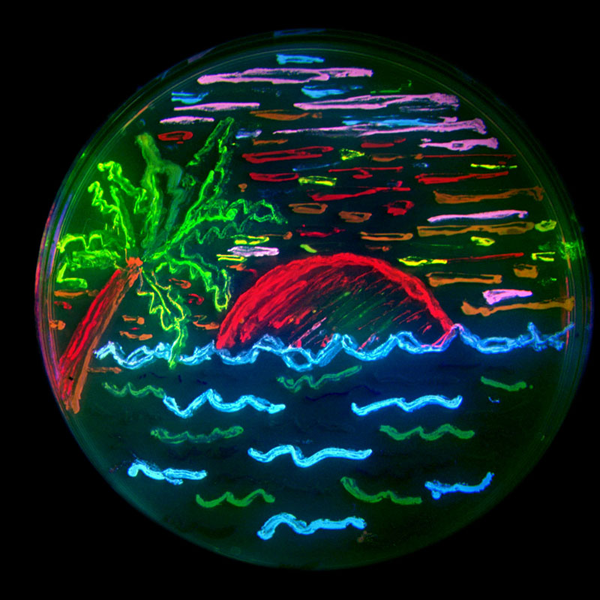Team:Slovenia/PROJECT/proof/popfret/back
From 2010.igem.org
A green fluorescent protein (GFP), first isolated in the 60s from a jellyfish Aequorea victoria, has been mutated in many different ways leading to a wide variety of fluorescent proteins with novel fluorescent properties.

It has been shown (Segal et al., 2005), that after splitting a fluorescent protein in two parts and fusing them with DNA specific binding domains, they can be brought together by the addition of a DNA containing specific DNA binding motifs for both DNA binding domains, leading to reconstitution and maturation of a functional fluorescent protein. It has also been reported than an amino acid overlap at the stitching point of split protein accelerates and enhances protein reassembly (Kerppola et al., 2003). We further developed this concept by testing split GFP reconstitution on a DNA program sequence leading to FRET effect in vivo thereby proving sequential binding of as much as four DNA binding factors on a predefined DNA program.
FRET (Förster resonance energy transfer) is a well known physical phenomena describing non-radiative energy transfer between two fluorophores. For FRET to occur two conditions have to be fullfield. Firstly, fluorophores must have overlapping fluorescence emission (donor fluorophore) and excitation (acceptor fluorophore) spectra and secondly, donor and acceptor fluorophore have to be close enough, meaning at angstrom range, so that non-radiative energy transfer can occur. Many suitable pairs among fluorescent proteins can be found that are convenient for FRET experiments. mCerulean and mCitrine are two among them being especially suitable for FRET studies.
This phenomena is used in a variety of molecular biology techniques, mainly for studying protein-protein interactions since FRET is a function of distance separating fluorescent proteins. This dependance can be simply illustrated as follows: if you double the distance between donor and acceptor molecule, FRET efficiency will be 64-times lower. This relationship is exactly represented as follows:
where E represents the fraction of energy transfer per donor excitation event, r is the distance between donor and acceptor molecule and R0 Förster distance (the distance at which FRET efficiency between two adjacent molecules is 50%).
 "
"